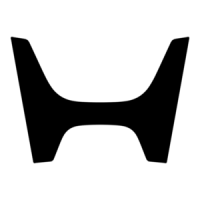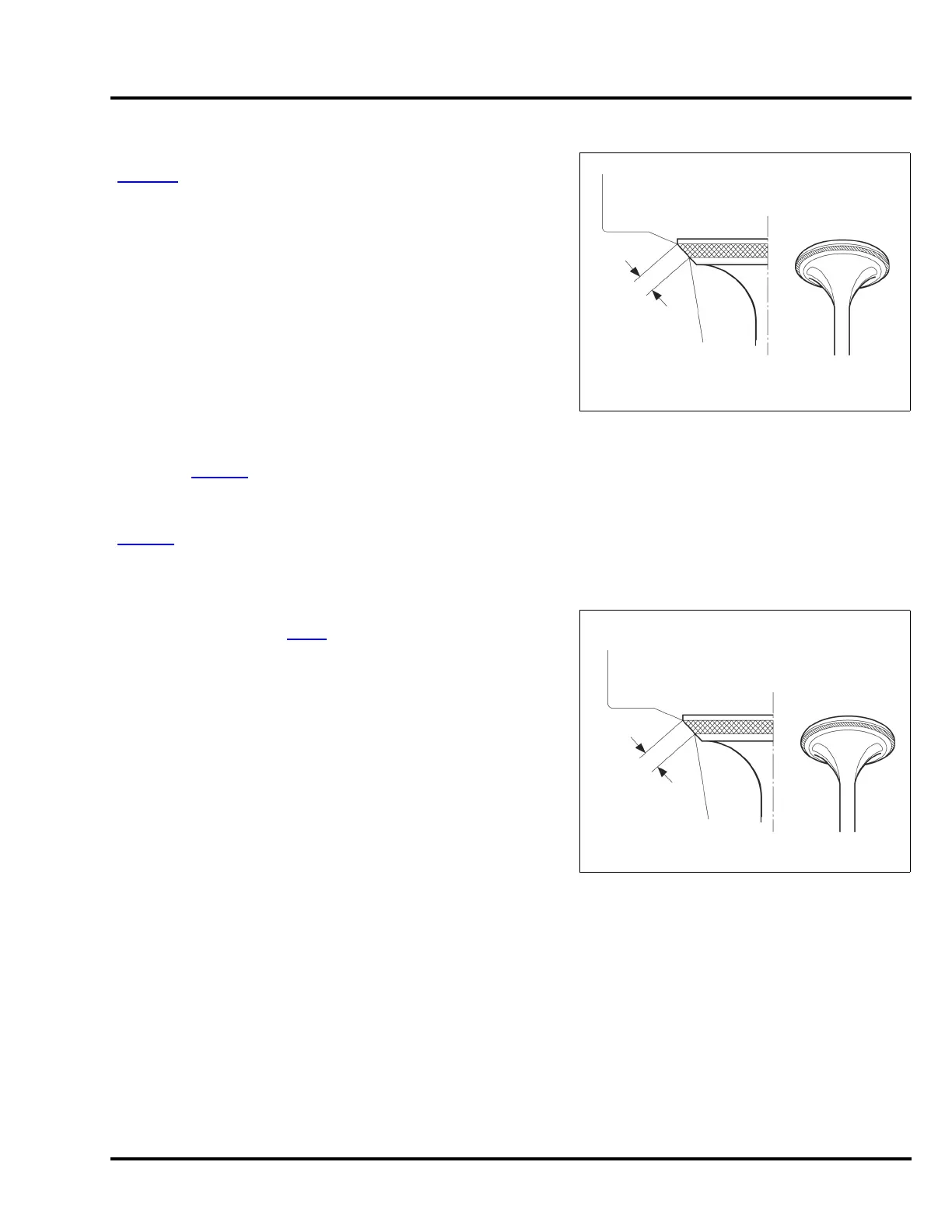10-31
HRN216 CAMSHAFT/CRANKSHAFT/ PISTON/CYLINDER
VALVE SEAT WIDTH
Remove the carbon deposits from the combustion chamber
(page 3-9
).
Inspect each valve for face irregularities.
If necessary, replace the valve.
Apply a light coat of Prussian Blue or erasable felt-tipped marker
ink to each valve seat.
Insert the valve, and snap it closed against its seat several times.
Be sure the valve does not rotate on the seat.
The transferred marking compound will show any area of the valve
face that is not concentric.
Measure the valve seat width of the cylinder head.
If the measurement is more than the service limit, recondition the
valve seat (P. 1 0- 3 1
).
Check whether the valve seat contact area of the valve is too high.
If the valve seat is too high or too low, recondition the valve seat
(P. 1 0- 3 1
).
VALVE SEAT RECONDITIONING
Thoroughly clean the combustion chamber and valve seats to
remove carbon deposits (P. 3 -9
).
Apply a light coat of Prussian Blue or erasable felt-tipped marker
ink to the valve seat.
Insert the valve, and snap it closed against its seat several times.
Be sure the valve does not rotate on the seat. The transferred
marking compound will show any area of the seat that is not
concentric.
Measure the valve seat width of the cylinder head.
If the measurement is more than the service limit, recondition the
valve seat.
Check whether the valve seat contact area of the valve is too high.
If the valve seat is too high, recondition the valve seat.
STANDARD: 0.7 – 0.9 mm (0.03 – 0.04 in)
SERVICE LIMIT: 1.8 mm (0.07 in)
STANDARD: 0.7 – 0.9 mm (0.03 – 0.04 in)
SERVICE LIMIT: 1.8 mm (0.07 in)
VALVE SEAT
WIDTH
VALVE SEAT
TOO HIGH
VALVE SEAT
WIDTH
VALVE SEAT
TOO HIGH

